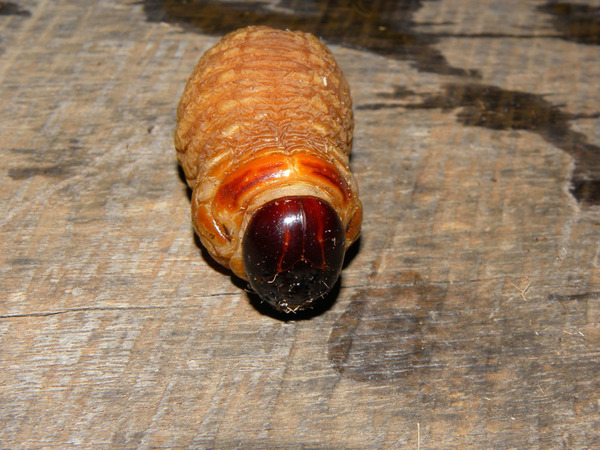Meet the Rhynchophorus palmarum, commonly known as the palm weevil. This fascinating insect is often found in tropical regions, especially in areas with palm trees. While many people view it as a pesky pest, others see it as a potential superfood or even a source of medicine. Let’s explore this unique creature and its various roles in our world.
The palm weevil is notorious for causing damage to palm trees, particularly in plantations. Adult weevils lay their eggs in the trunk of palm trees, and when the larvae hatch, they burrow into the wood, weakening the tree and sometimes leading to its death. This has significant economic implications for farmers who rely on palm trees for coconut, oil, and other products. Controlling their population is essential to protect these valuable crops.

Despite being seen as a pest, Rhynchophorus palmarum has garnered attention for its nutritional value. In many cultures, particularly in parts of Africa and South America, these larvae are considered a delicacy. They are rich in protein, healthy fats, and essential vitamins. As the global population grows, there is increasing interest in alternative protein sources, and palm weevil larvae could play a role in sustainable diets.
Eating insects, known as entomophagy, is already common in many countries. The palm weevil's larvae can be fried, roasted, or even used in dishes like stews and tacos. They have a unique taste that some describe as nutty or buttery, making them an intriguing option for adventurous eaters.

Beyond their culinary uses, there’s emerging research into the medicinal properties of Rhynchophorus palmarum. Some studies suggest that extracts from these weevils may possess antibacterial and anti-inflammatory properties. Traditional medicine in various cultures has used insects for healing purposes, and the palm weevil is no exception.
Researchers are investigating whether compounds found in the larvae could be used to develop new treatments for diseases or to enhance immune function. While more studies are needed to confirm these benefits, the potential for palm weevils in medicine is an exciting area of exploration.

So, is the Rhynchophorus palmarum a pest, a superfood, or a source of medicine? The answer is that it can be all three, depending on the perspective. While farmers continue to combat this insect as a threat to their crops, others are looking at it as a valuable resource for nutrition and health.
As we face challenges like food security and the search for sustainable protein sources, insects like the palm weevil may offer solutions. Embracing the dual nature of this insect could lead to innovative approaches to agriculture, nutrition, and medicine in the future.
animal tags: Rhynchophorus-palmarum
We created this article in conjunction with AI technology, then made sure it was fact-checked and edited by a Animals Top editor.